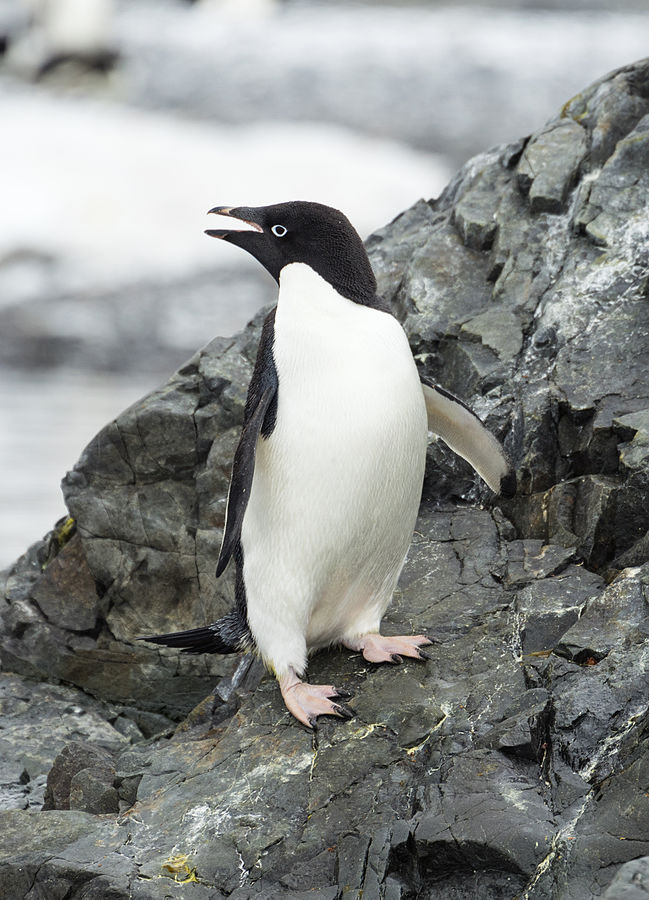Difference between revisions of "Template:Westarctica.wiki:Today's featured article"
Westarctica (talk | contribs) |
Westarctica (talk | contribs) |
||
| Line 1: | Line 1: | ||
[[File: | [[File:Hope Bay-Adélie penguin.jpg|300px|left]] | ||
'''[[ | The '''[[Adélie penguin]]''' is a species of [[penguin]] common along the entire [[Antarctica|Antarctic]] coast, which is their only residence. They are among the most southerly distributed of all seabirds, along with the [[emperor penguin]], the south polar skua, [[Wilson's storm petrel]], the [[snow petrel]], and the [[Antarctic petrel]]. They are named after [[Adélie Land]], in turn named for Adèle Dumont D'Urville, the wife of French explorer Jules Dumont d'Urville, who discovered these penguins in 1840. | ||
Based on a 2014 analysis of fresh guano-discolored coastal areas, 3.79 million breeding pairs of Adélie penguins are in 251 breeding colonies, a 53% increase over a census completed 20 years earlier. The colonies are distributed around the coastline of the Antarctic land and ocean. Colonies have declined on the [[Antarctic Peninsula]], but those declines have been more than offset by increases in [[East Antarctica]]. During the breeding season, they congregate in large breeding colonies, some over a quarter of a million pairs. Individual colonies can vary dramatically in size, and some may be particularly vulnerable to climate fluctuations. In March 2018, a colony of 1.5 million was discovered. | |||
'''([[ | '''([[Adélie penguin|Full Article...]])''' | ||
Revision as of 23:17, 22 April 2020
The Adélie penguin is a species of penguin common along the entire Antarctic coast, which is their only residence. They are among the most southerly distributed of all seabirds, along with the emperor penguin, the south polar skua, Wilson's storm petrel, the snow petrel, and the Antarctic petrel. They are named after Adélie Land, in turn named for Adèle Dumont D'Urville, the wife of French explorer Jules Dumont d'Urville, who discovered these penguins in 1840.
Based on a 2014 analysis of fresh guano-discolored coastal areas, 3.79 million breeding pairs of Adélie penguins are in 251 breeding colonies, a 53% increase over a census completed 20 years earlier. The colonies are distributed around the coastline of the Antarctic land and ocean. Colonies have declined on the Antarctic Peninsula, but those declines have been more than offset by increases in East Antarctica. During the breeding season, they congregate in large breeding colonies, some over a quarter of a million pairs. Individual colonies can vary dramatically in size, and some may be particularly vulnerable to climate fluctuations. In March 2018, a colony of 1.5 million was discovered.
